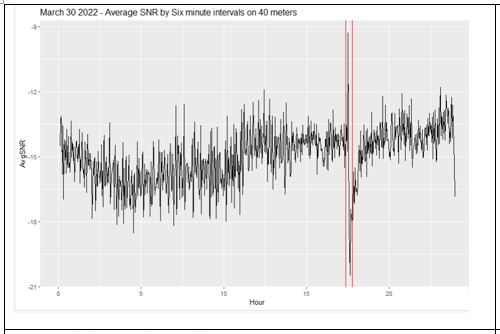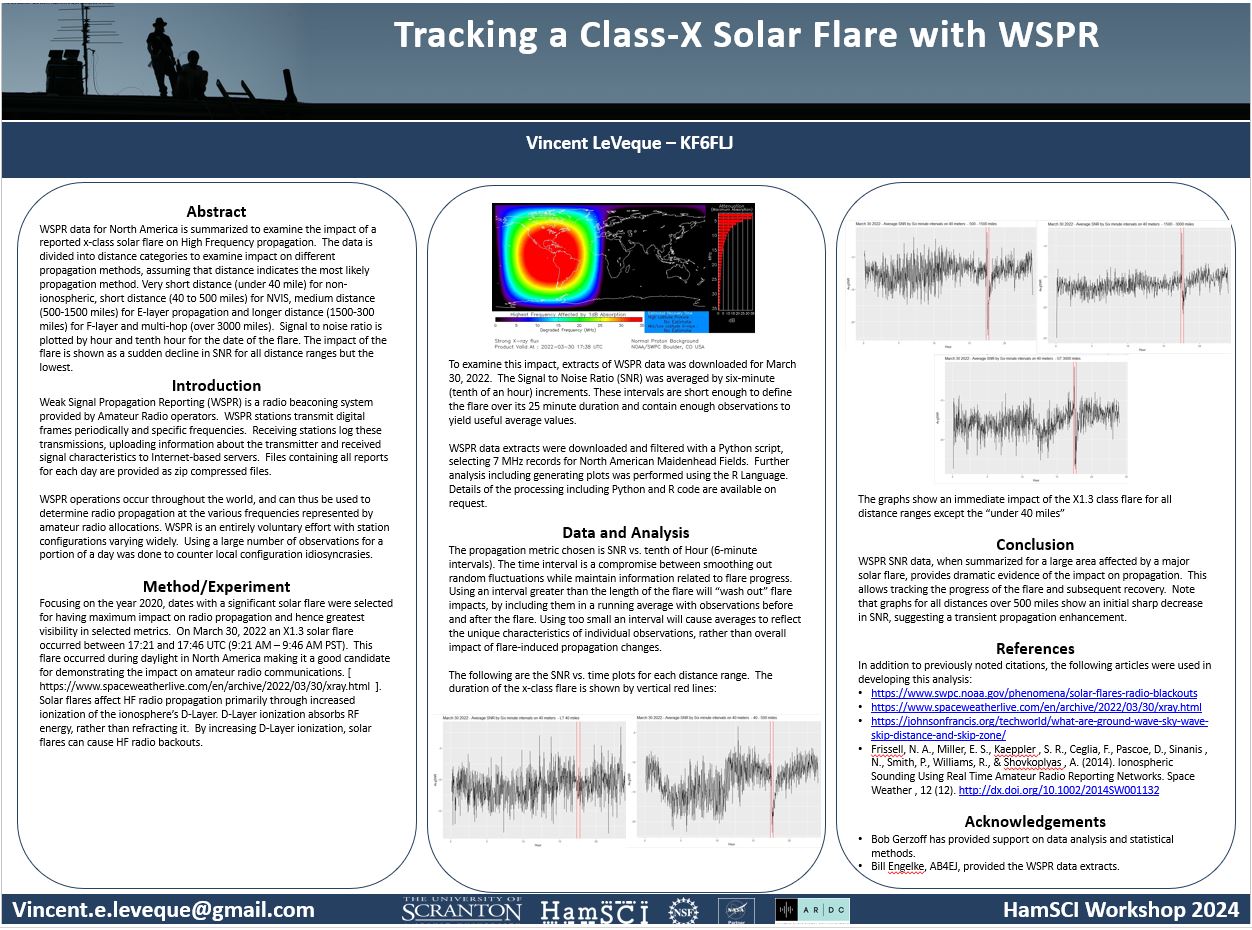I got frustrated trying to find evidence of transient ionospheric disturbances (TIDs) in WSPR data. Instead I took an obvious event and tried to find its signature in WSPR propagation data. The event was an X1.3 solar flare on March 30, 2022. This flare occurred during daylight hours in the USA. Surely an X-Class flare would reveal itself in WSPR.
I chose 7 MHZ where both transmitter and receiver were in North America. I reviewed three possible metrics: average propagation distance, number of observations, and reported SNR. Reported SNR gave the clearest results.
I divided the data into different distance categories, figuring that each would have different propagation mechanisms and possibly show different effects of the flare. Under 40 miles there was no visible impact, expected as this would be line-of-sight. Other distance ranges were similar to each other with one minor variation I will describe later.
Here is the aggregate SNR by time,with the red lines delimiting the flare duration:

As expected there is a dramatic drop in SNR during the flare. What wasn’t expected was an almost as dramatic increase right at the start. Did the flare initially enhance propagation? Or did the weakest signals drop out, raising the average?
I showed this to my HamSci mentor, Bob Gerzoff, and he thought this was interesting enough to submit as an abstract to HamSci 2024. I dashed an abstract together right before the deadline. It was accepted as a poster session. I’m not normally one to travel to Cleveland during cold weather, but made the trip so I could discuss my work with anyone who would listen and also enjoy the other sessions (https://www.hamsci.org/hamsci-2024-program)
Here is a snapshot of my poster, BTW:
